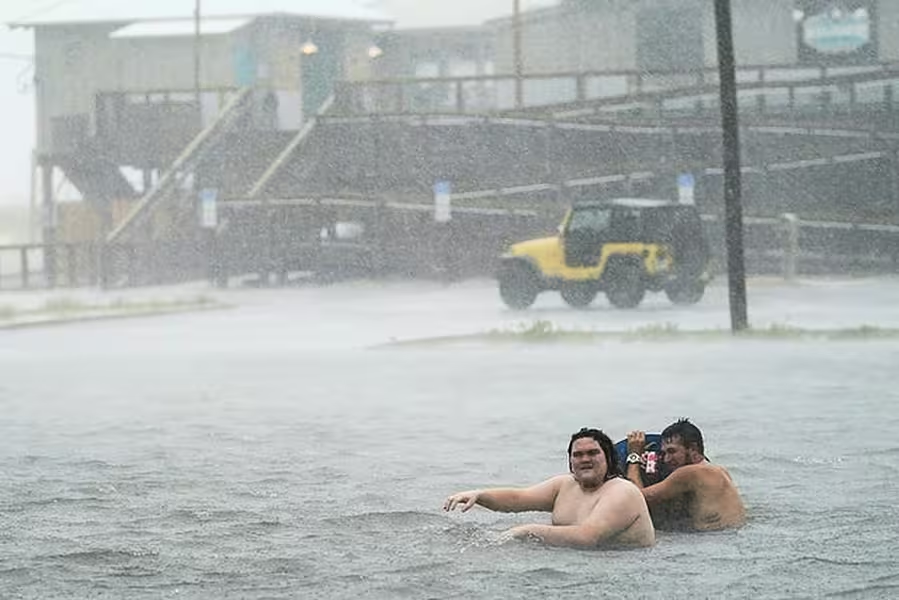Forecasters believe the rain will cause dangerous flooding from the Florida Panhandle to Mississippi and well inland in the days ahead.
Moving at just three miles-per-hour, Sally finally came ashore at 4.45am, with top winds of 105 mph, the National Hurricane Center said.

Sally’s northern eyewall had raked the Gulf Coast with hurricane-force winds and rain from Pensacola Beach, Florida, westward to Dauphin Island, Alabama, for hours before its centre finally hit land.
Nearly 400,000 homes and businesses had lost electricity early on Wednesday, according to the poweroutage.us site, and a curfew was called in the coastal Alabama city of Gulf Shores due to life-threatening conditions.
Stacy Stewart, a senior specialist with the hurricane center, told The Associated Press that the rainfall will be “catastrophic and life-threatening” over portions of the Gulf Coast, Florida panhandle and south-eastern Alabama.

The storm is expected to produce heavy rainfall Wednesday night and Thursday over portions of central and southern Georgia.
“Sally has a characteristic that isn’t often seen and that’s a slow forward speed and that’s going to exacerbate the flooding,” Ed Rappaport, deputy director of the hurricane center, told The AP.
Although the hurricane had the Alabama and Florida coasts in its sights on Wednesday, its effects were felt all along the northern Gulf Coast.
Low-lying properties in south-east Louisiana were swamped by the surge, water covered Mississippi beaches and parts of the road that runs parallel to them, while two large casino boats broke loose from a dock where they were undergoing construction work in Alabama.

Mississippi Governor Tate Reeves urged people in the southern part of his state to prepare for the potential for flash flooding.Meanwhile, Tropical Storm Teddy has now become a hurricane with maximum sustained winds of 100 mph, the National Hurricane Center said.
Teddy is located about 820 miles east of the Lesser Antilles and hurricane-force winds extend outward up to 25 miles from the centre, with tropical-storm-force winds extending outward up to 175 miles.
Some strengthening is forecast during the next few days and Teddy is likely to become a major hurricane and could reach Category 4 strength.







